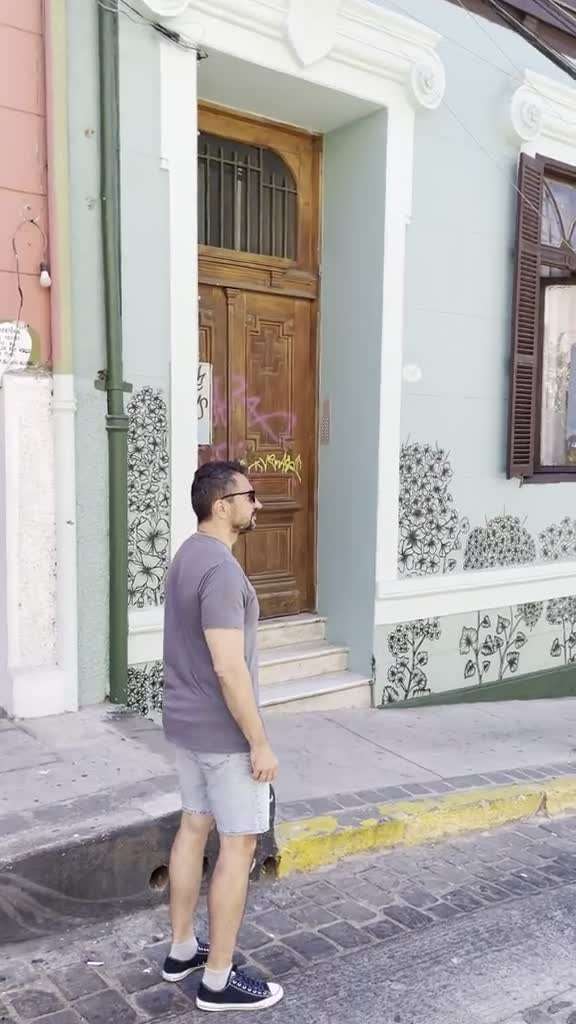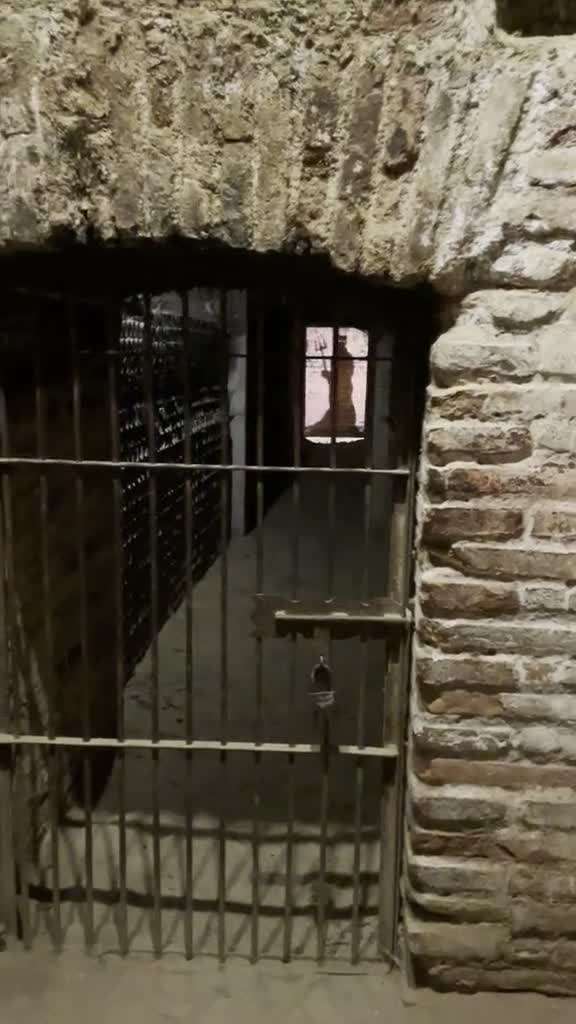The Great La Cancha Market
Removed from Unnamed collection
Source: Sam Zoon Images may be subject to copyright. Learn More
La Cancha market in Cochabamba is a sprawling wonderland, one of the largest open-air markets in Latin America. It's a place where you can find everything from fresh fruits and vegetables to the latest tech gadgets like plasma TVs and cutting-edge computers. This bustling hub is more than just a market; it's an area that encompasses several smaller markets, fairs, shops, and street vendors. Nestled in the southern part of the city, it's conveniently located near the old railway station and just a few blocks from the bus terminal.
The roots of this vibrant market scene trace back to when agrarian reform allowed farmers to transition into merchants over the years. Now, the market pulses with life as over 100,000 merchants, both with mobile and fixed stalls, conduct their business here at La Cancha.
Exploring La Cancha is an adventure for the senses. The air is filled with the aroma of street food, and the sounds of haggling mix with laughter and chatter. It's a place where you can lose track of time, wandering through aisles brimming with colorful textiles, handcrafted goods, and local delicacies. It's not just shopping; it's an experience that captures the heart of Cochabamba's local culture. You may also be interested:
Removed from Unnamed collection
Cristo de La Concordia 
The Cristo de La Concordia is an awe-inspiring statue nestled in the heart of Cochabamba, Bolivia. Since 1987, it has been a must-see attraction for anyone visiting the city. Towering over the landscape, this statue is often touted as the world's lar
Map
Removed from Unnamed collection
Martin Cardenas Botanical Garden 
Nestled in the heart of Cochabamba, the expansive Martín Cárdenas Botanical Garden spans approximately two hectares. This verdant haven is named after the renowned Dr. Martín Cárdenas, a dedicated botanist who spent his life exploring Bolivia's rich
Map
Removed from Unnamed collection
Parque Cretacico 
Sucre, a charming city in Bolivia, boasts one of the largest collections of dinosaur footprints on the planet. Just a short 5-kilometer jaunt from the city center, you'll find the Cal Orck’o cliff. This natural wonder showcases over 5,000 dinosaur fo
Map
Removed from Unnamed collection
Sucre Metropolitan Cathedral 
Nestled in the heart of Sucre, Bolivia, the Metropolitan Cathedral stands as a testament to the city's deep religious roots and rich history. Known locally as Catedral Metropolitana, this iconic structure serves as the spiritual center for the Roman
Map
Removed from Unnamed collection
Museo Universitario Charcas 
Nestled within the charming walls of a 17th-century mansion, the Museo Universitario Charcas is a hidden gem in Sucre, owned by the Universidad San Francisco Xavier. This cultural hotspot actually comprises three unique museums: the Anthropological M
Map
Removed from Unnamed collection
Arequipa 
28 November 2023
This is a lovely city, with a very well preserved downtown, a Mediterranean climate, a ring of snow capped mountains, tons of history and it is the epicenter of Peruvian cuisine, which is fabulous and diverse. I stayed in the quiet residential sectio
Map
Removed from Unnamed collection
Arequipa Peru Temple 
Nestled a mere three miles from the bustling heart of Arequipa, Peru, the Arequipa Temple site offers a serene escape, perched near the entrance to the tranquil village of Carmen Alto. This enchanting spot is set on a bluff that rises gracefully from
Map
Removed from Unnamed collection
Arequipa Cathedral and Museum 
Nestled in the heart of the city, this stunning 17th-century monument stands as one of the earliest examples of neoclassical architecture in the area. Crafted from "sillar," a unique volcanic stone, it boasts a timeless elegance that captivates visit
Map
Removed from Unnamed collection
Santa Catalina Monastery 
Constructed in 1580, this historic citadel evolved over the years to feature charming cloisters, lively plazas, quaint streets, iconic tiled roofs, and rustic cobblestone paving. It once functioned as a completely enclosed convent, providing a seclud
Map
Removed from Unnamed collection
Chiu Chiu
Nestled along the famous Inca Trail, this hidden gem offers a refreshing oasis of shade amidst the vast desert landscape. Chiu Chiu is a charming spot where the pace of life is laid-back, punctuated by lively religious festivals. Depending on the pat
Removed from Unnamed collection
Padre Le Paige Museum
Nestled in the heart of San Pedro de Atacama, the Gustavo Le Paige Archaeological Museum is a treasure trove of history that traces the fascinating evolution of the Atacameñan culture over more than eleven thousand years. Founded by the Belgian pries
Removed from Unnamed collection
El Tatio Geysers
Wake up before dawn to witness an unforgettable spectacle as the sun rises over the craters of El Tatio. Perched 4,200 meters above sea level, El Tatio's geysers put on a mesmerizing show with their fumaroles. These white steam columns are at their p
Removed from Unnamed collection
Moon and Mars Valley
The quirky rock formations and sweeping dunes of Moon Valley (Valle de la Luna), along with the ever-shifting hues of Mars Valley (Valle de Marte) and the Salt Mountains, are unmissable attractions when exploring the Atacama Desert. By night, these a
Removed from Unnamed collection
Tulor Village
Nestled within the heart of the desert, Tulor Village is like a hidden gem waiting to be discovered. Once an essential hub around 2800 BC, this ancient city was home to about 200 people. Today, it stands as a captivating museum, seemingly swallowed b
Removed from Unnamed collection
Los Flamencos National Reserve
In the vastness of the desert, you'll come across lagoons, salt flats, and mountains seamlessly woven into the landscape. Together, these elements create sights that are nothing short of magical! The Los Flamencos National Reserve is a place where yo
Removed from Unnamed collection
Atacama Salt Flat
Imagine stepping into a vast, otherworldly landscape, where surprises await around every corner. The Atacama Salt Flat stretches across an impressive 3,000 square kilometers, offering a sight that's truly unbeatable. This region is not just a feast f
Removed from Unnamed collection
Uros Floating Islands 
Ever imagined what it would be like to live right in the middle of a lake? The Uros people on Lake Titicaca have turned this dream into reality. Perched at a stunning 3,810 meters above sea level, they’ve ingeniously crafted floating islands made ent
Map
Removed from Unnamed collection
Machu Picchu-Peru 
30 November 2023
Machu Picchu is beautiful in every way! It was insane the amount of good reviews about this place and they are not wrong. Machu Picchu is also one of the least understood archaeological sites in the world. Built at the pinnacle of the Inca's power, t
Map
Removed from Unnamed collection
Machu Picchu 
Machu Picchu, this ancient Incan city, is a mesmerizing blend of temples, terraces, and water channels, all perched dramatically on a mountaintop. Crafted from massive stone blocks, these structures fit together seamlessly without a trace of mortar.
Map
Removed from Unnamed collection
Cathedral of Lima 
The Cathedral of Lima, nestled in the city's historic heart, is a beacon of history and art. It's not just any building; it's the most iconic structure in Lima and a treasure trove of religious art. This grand cathedral also serves as the resting pla
Map
Removed from Unnamed collection
Government Palace of Peru 
The Government Palace in Lima has stood since the city was founded in 1535, although it's taken on various forms over the years. Originally constructed on a Huaca, a sacred site of the chief Taulichusco in the Rímac Valley, this area was one of the f
Map
Removed from Unnamed collection
Lima Plaza Mayor 
The Plaza Mayor, or Plaza de Armas as it was known until 1990, is Lima's oldest public square. Founded in 1535 by the conquistador Francisco Pizarro, this historic spot was originally the site of an indigenous settlement. Pizarro envisioned the main
Map
Removed from Unnamed collection
Los Penitentes 
Nestled 187 kilometers northwest of Mendoza city on International Route Nº 7, Los Penitentes is a winter wonderland waiting to be explored. Whether you're into Nordic skiing, alpine skiing, competitive skiing, or snowboarding, this resort has somethi
Map
Removed from Unnamed collection
The Cathedral of Our Lady of Loreto 
Nestled right across from Plaza Sarmiento, between Moreno and Lavalle streets, lies the charming Cathedral of Our Lady of Loreto. This historical gem stands as one of the oldest cathedrals in the city and still proudly showcases its original architec
Map
Removed from Unnamed collection
San Felipe Wine Museum - La Rural Winery 
Back in 1945, Mr. Francisco Rutini, the eldest son of Mr. Felipe Rutini, had a brilliant idea. He envisioned a museum that would showcase the rich history of wine in Mendoza. Nestled inside the La Rural winery, this museum is a treasure trove for any
Map
Removed from Unnamed collection
Renaca Beach 
If you're craving a mix of parties, bohemian vibes, and sun-soaked beaches, Reñaca is the perfect summer destination for you. This lively spot on the Chilean coast is buzzing with energy, offering everything from thrilling outdoor adventures to delig
Map
Removed from Unnamed collection
Parana River 
The Paraná River, a marvel in its own right, ranks among the fastest and longest rivers globally. It winds its way between towering cliffs, creating a dramatic landscape that's nothing short of breathtaking. As you head north from Rosario, the river
Map
Removed from Unnamed collection
Juan B. Castagnino Municipal Museum of Fine Arts 
Nestled along the edge of Parque Independencia on Pellegrini Avenue, the Juan B. Castagnino Museum of Fine Arts stands as a beacon of cultural significance right in the heart of Argentina. This museum, established in 1936, was a marvel of modern arch
Map
Removed from Unnamed collection
National Monument to the Flag 
Nestled along the banks of the Paraná River, the city of Rosario holds a piece of Argentina's heart and history. It's here where Manuel Belgrano first hoisted the National Flag on February 27, 1872, a moment that rippled through national consciousnes
Map
Removed from Unnamed collection
Wulff Castle 
In 1881, Mr. Gustavo Wulff, a German trader dealing in saltpeter and coal, as well as a maritime transporter, decided to make Chile his new home. Fast forward to 1904, and he purchased a 1,260-square-meter plot from Dr. Teodoro Von Schoeders, right i
Map
Removed from Unnamed collection
Quinta Vergara 
In the early 19th century, the land was owned by Juan Antonio de la Carrera and his wife. They later sold it in 1840 to Francisco Salvador Alvarez, a Portuguese merchant with an eye for opportunity. It was here that Alvarez constructed his home, turn
Map
Removed from Unnamed collection
Valparaiso. Chilean pacific coast. 
22 January 2025
Testing link font to ensure everything is correct
Map
Removed from Unnamed collection
Cementerio General de Santiago 
Named one of the World’s Most Scenic Cemeteries by CNN, Santiago’s sprawling Cementerio General is absolutely worth a visit. Covering a vast 210 acres (85 hectares) just north of the city center in the Recoleta neighborhood, this lavish and expansive
Map
Removed from Unnamed collection
Museo a Cielo Abierto 
If you're a street art enthusiast, Santiago's Museo a Cielo Abierto in the San Miguel neighborhood is a must-see. This open-air museum boasts dozens of gigantic murals that transform the urban landscape into a vibrant canvas. It's a perfect spot for
Map
Removed from Unnamed collection
Casillero del Diablo winery 
20 January 2025
That was my birthday and we spent more than half of this day at the Casillero del Diablo winery in Santiago ... drinking wine and having a great time! What else would you want to do on your birthday? 😀 Casillero del Diablo is the largest winery in Sa
Map

 Sam Zoon
Sam Zoon 
 Bolivia
Bolivia 




































